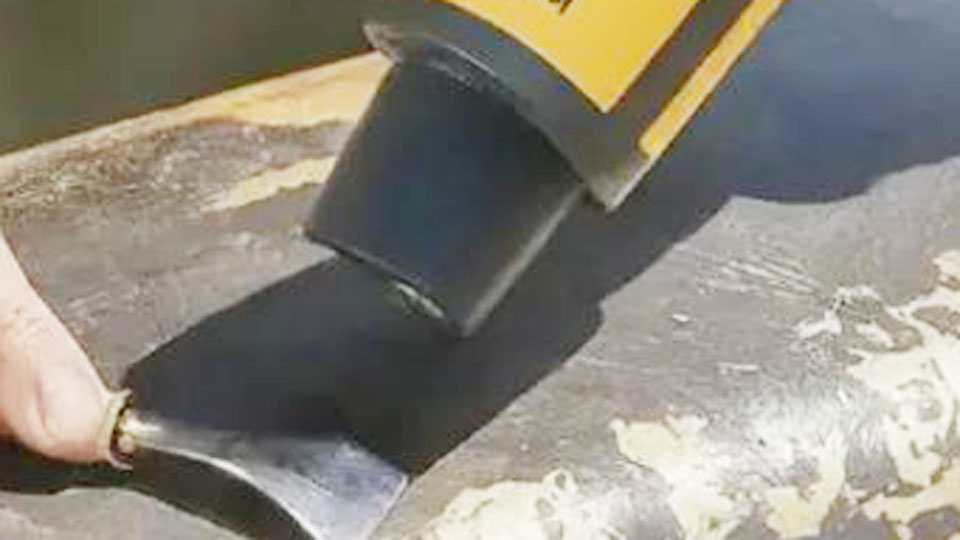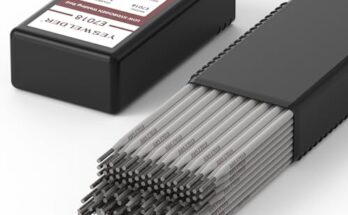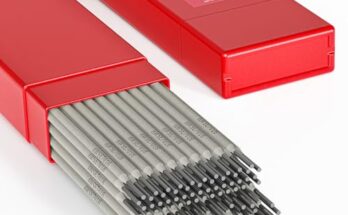Removing paint from metal surfaces can sometimes feel like a daunting task, especially when you don’t want to damage the metal or spend hours sanding away old layers of paint. I’ve been in that situation more times than I care to admit.
If you’re working on a rusty metal table, an old metal door, or any other metal surface, there are ways to get that paint off without the need for sanding.

Image by procoverpainting
I’ll walk you through several effective techniques for removing paint from metal surfaces, all without touching a single piece of sandpaper. Let’s dive into the details.
Why Remove Paint from Metal Without Sanding?
Sanding may seem like the obvious way to strip paint from metal, but it comes with its own set of challenges.
It can be messy, time-consuming, and physically demanding. More importantly, sanding risks damaging the metal beneath the paint, especially if you’re not careful.
Not to mention, sanding creates a lot of dust, which can be tough to clean up. For those looking for a less abrasive method, removing paint without sanding is a cleaner and more efficient option.
Methods for Removing Paint from Metal Without Sanding
Luckily, there are a variety of methods to remove paint from metal without relying on sandpaper. From chemical strippers to natural solutions, you have plenty of options to choose from. Here’s a rundown of the most effective techniques.
Using Paint Removers or Strippers
One of the most common and effective ways to remove paint from metal is by using chemical paint removers or paint strippers.
These products are specifically designed to break down paint, making it easier to wipe away. Most paint removers come in gel, liquid, or paste form, and they work by softening the paint so it can be peeled off.
How to Use Paint Removers
Choose the Right Paint Remover: Make sure to select a paint remover that’s suitable for metal surfaces. There are various types, including solvent-based, caustic-based, and biodegradable options.
Prepare the Surface: Before applying the remover, clean the metal surface to remove any dirt or grease.
Apply the Remover: Follow the instructions on the product and apply the remover to the painted surface. For gel-based removers, use a brush to spread the gel evenly.
Wait for the Paint to Lift: Allow the paint remover to sit on the metal for the recommended time. This typically takes between 15 minutes to an hour.
Scrape the Paint Off: Once the paint has softened, use a plastic scraper or putty knife to gently remove the paint.
Clean the Metal: After all the paint has been removed, rinse the surface with water and a mild detergent to clean off any remaining chemical residue.
Safety Tips
- Always wear gloves and eye protection when working with chemical removers, as they can be harsh on your skin and eyes.
- Work in a well-ventilated area to avoid inhaling fumes from the chemicals.
Using Heat (Heat Gun or Blowtorch)
If you prefer a more physical approach, using heat can be an excellent method to remove paint from metal without sanding. A heat gun or blowtorch can effectively loosen the paint, allowing you to peel it off in layers.
How to Use Heat to Remove Paint
Set Up Your Work Area: Ensure you’re working in a well-ventilated space, and protect surrounding areas with drop cloths to catch any paint chips.
Heat the Metal Surface: Using a heat gun or blowtorch, direct the heat at the painted surface. Keep the gun about 3 to 4 inches away from the metal and move it back and forth to avoid burning any specific area.
Peel the Paint: As the paint heats up, it will begin to bubble and lift from the metal. Use a scraper or putty knife to gently peel the softened paint off.
Clean Up: Once the paint is removed, clean the surface with a damp cloth to remove any residue left from the heated paint.
Precautions
- Be cautious when using a blowtorch, as it can easily damage the metal if left in one place too long.
- Make sure the metal is cool before handling it to avoid burns.
Using Vinegar (A Natural Solution)
If you prefer a natural and non-toxic method, vinegar can be an effective solution for removing paint from metal. The acidity in vinegar breaks down the paint, making it easy to remove without sanding.
How to Use Vinegar for Paint Removal
- Heat the Vinegar: In a pot, heat up some vinegar until it’s steaming but not boiling. The heat helps to activate the vinegar and improve its effectiveness.
- Apply the Vinegar: Use a sponge or cloth to apply the warm vinegar to the painted metal surface. Allow the vinegar to soak into the paint for about 15-20 minutes.
- Scrape the Paint: After the vinegar has had time to work, use a scraper or brush to gently remove the paint. You’ll notice that the paint comes off much easier.
- Clean the Metal: Rinse the surface with water and mild soap to remove any vinegar residue.
Why Vinegar Works
Vinegar is a natural acid that reacts with the paint, breaking down its structure. It’s a great choice for smaller jobs or when you’re looking for a more environmentally friendly option.
Using Baking Soda and Water
Another effective and natural way to remove paint from metal is by using baking soda and water. This method works best for smaller metal items, such as tools or hardware.
How to Use Baking Soda for Paint Removal
- Make a Paste: Mix baking soda with a small amount of water to create a thick paste.
- Apply the Paste: Spread the paste onto the painted surface and let it sit for 15 to 30 minutes.
- Scrape the Paint: Use a scraper to gently remove the paint. The baking soda will have loosened the paint, making it easier to peel off.
- Clean the Metal: Rinse the metal with warm water to remove any leftover baking soda residue.
Using a Power Washer
For large metal surfaces or outdoor projects, a power washer can be an effective tool for removing paint. The high-pressure water stream helps to strip away the paint quickly and efficiently.
How to Use a Power Washer
- Set the Power Washer: Choose a medium pressure setting to avoid damaging the metal surface.
- Spray the Painted Area: Hold the nozzle of the power washer about 6-8 inches away from the surface and spray at an angle. Start at the top of the surface and work your way down.
- Repeat if Necessary: For tough paint, you may need to go over the area multiple times to remove all of it.
- Dry the Metal: Once the paint is removed, dry the metal thoroughly to prevent rusting.
When to Use a Power Washer
Power washers are ideal for large, outdoor surfaces, like metal fences, outdoor furniture, or large metal structures. However, they might not be suitable for delicate or intricate metalwork.
Other Considerations When Removing Paint from Metal
Rust and Corrosion
When you’re removing paint from metal, be mindful of any underlying rust or corrosion. In some cases, removing the paint can expose these issues.
If you encounter rust, you may want to address it before repainting the metal. This can be done by using a rust remover or a rust converter to prevent further damage.
Environmental Impact
When using chemicals or other harsh methods, it’s essential to consider the environmental impact. Opt for eco-friendly products when possible, especially if you’re working outdoors or near plants and wildlife. Many biodegradable paint strippers are available that break down naturally, minimizing harm to the environment.
Conclusion
Removing paint from metal without sanding is a manageable task with the right tools and techniques. If you’re using paint removers, heat, vinegar, or other methods, there’s a solution that can work for your project. The key is to choose the right method based on the type of metal, the paint, and the scale of your project.
You’ll have a clean metal surface ready for a fresh coat of paint or whatever next step you have in mind. Don’t forget to follow safety guidelines and take the necessary precautions to protect yourself and the environment. Happy painting!
FAQs
Can I remove paint from metal without using chemicals?
Yes, there are natural methods such as using vinegar, baking soda, or even heat to remove paint without relying on harsh chemicals.
How do I know which paint remover to choose?
Look for paint removers specifically designed for metal surfaces. Always choose a product that matches the type of paint you’re removing (oil-based, latex, etc.).
Does vinegar work for all types of metal?
Vinegar works best for softer metals like aluminum or steel, but it may not be as effective on harder metals. It’s a great, eco-friendly option for smaller jobs.
How long should I leave paint remover on the metal?
It depends on the product you’re using. Generally, you’ll need to leave the paint remover on for 15 minutes to an hour, depending on how thick the paint is.
Will using a power washer damage the metal?
When used correctly, a power washer won’t damage the metal. Be sure to adjust the pressure and spray at an angle to avoid denting or warping the metal.







